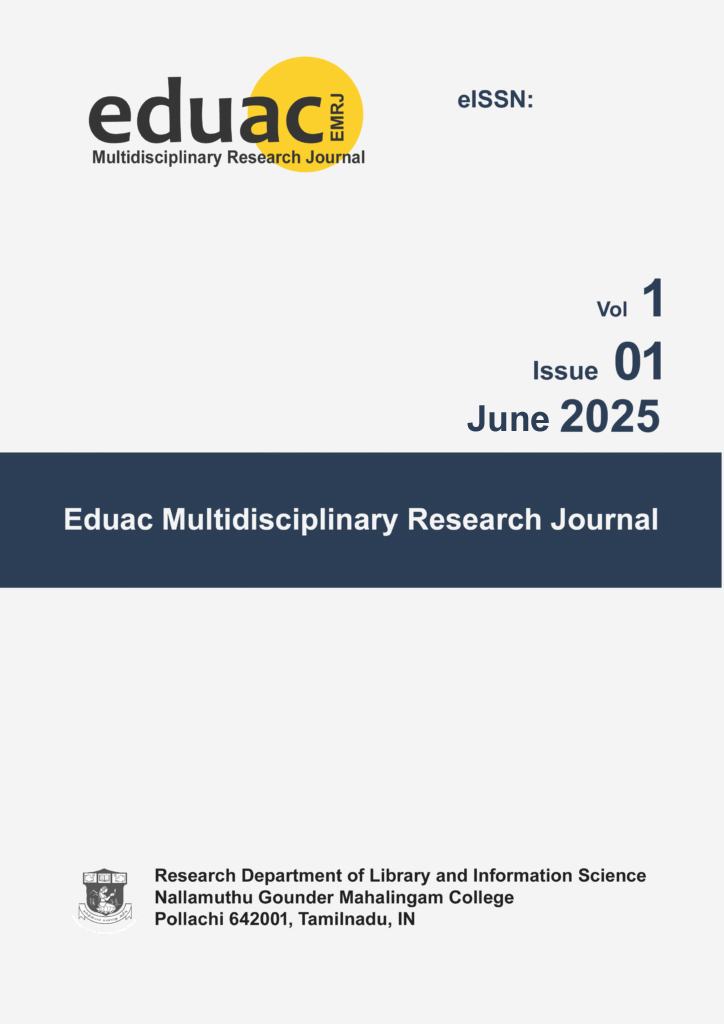A Critical Evaluation, Challenges, and Future Perspectives of Using Artificial Intelligence and Emerging Technologies in Smart Classrooms
DOI:
https://doi.org/10.63300/Keywords:
Smart Classrooms, Artificial Intelligence, Emerging Technologies, Educational Technology, Personalized Learning, EdTech, Challenges, Future Perspectives, Critical EvaluationAbstract
The rapid evolution of Artificial Intelligence (AI) and various emerging technologies (ETs) is poised to fundamentally reshape educational landscapes. Smart classrooms, characterized by their technologically enhanced, interactive, and personalized learning environments, represent a frontier for this integration. This paper provides a critical evaluation of the benefits and limitations of deploying AI and ETs in smart classrooms, examining their potential to foster individualized learning, automate tasks, and enhance engagement. It also delves into the significant challenges that impede widespread and effective implementation, including ethical dilemmas, infrastructural demands, pedagogical shifts, and issues of equity. Finally, the paper explores future perspectives, offering recommendations for ethical deployment, sustainable integration, and policy development to harness these technologies' full potential for creating more adaptive, accessible, and engaging learning experiences. The integration of Artificial Intelligence (AI) and smart technologies in educational spaces has led to the concept of "Smart Classrooms." This paper presents a literature review on smart classroom technology, with a focus on AI-related technologies. Key technologies related to smart classes, such as effective class management, smart teaching aids, and automated performance assessment, are discussed, with an emphasis on the role of AI in these areas. A SWOT analysis is presented, highlighting the Strengths, Weaknesses, Opportunities, and Threats of adopting AI in smart classes. The challenges and future perspectives of utilizing AI-based techniques in smart classes are also discussed. This survey targets educators and AI professionals to inform them about the potential and limitations of AI in education and inspire AI professionals to address the challenges and peculiarities of educational AI-based systems.
Downloads
References
• Mery, D., Mackenney, I., & Villalobos, E. (2019). Student attendance system in crowded classrooms using a smartphone camera. In 2019 IEEE Winter Conference on Applications of Computer Vision (pp. 857–866)
• Michalsky, T. (2021). Integrating video analysis of teacher and student behaviors to promote Preservice teachers’ teaching meta-strategic knowledge. Metacognition and Learning, 16(3), 595–622. Article Google Scholar
• Mintz, R., Litvak, S., & Yair, Y. (2001). 3D-virtual reality in science education: An implication for astronomy teaching. Journal of Computers in Mathematics and Science Teaching, 20(3), 293–305. Google Scholar
• Mircea, M., Stoica, M., & Ghilic-Micu, B. (2021). Investigating the impact of the internet of things in higher education environment. IEEE Access, 9, 33396–33409. Article Google Scholar
• Morrissey, K., & Kirakowski, J. (2013). ‘Realness’ in chatbots: establishing quantifiable criteria. In International conference on human-computer interaction (pp. 87–96).
• Moseley, S., & Ajani, T. (2015). USERS'PERCEPTIONS ON THE BRIGHTSPACE LEARNING MANAGEMENT SYSTEM. Issues in Information Systems, 16(4).
• Mubin, O., Stevens, C. J., Shahid, S., Al Mahmud, A., & Dong, J. J. (2013). A review of the applicability of robots in education. Journal of Technology in Education and Learning, 1(209–0015), 13. Google Scholar
• Mystakidis, S. (2022). Metaverse. Encyclopedia, 2(1), 486–497. Article Google Scholar
• Ngoc Anh, B., Tung Son, N., Truong Lam, P., Phuong Chi, L., Huu Tuan, N., Cong Dat, N., Huu Trung, N., Umar Aftab, M., & Van Dinh, T. (2019). A computer-vision based application for student behavior monitoring in classroom. Applied Sciences, 9(22), 4729. Article Google Scholar
• Okita, S. Y., Ng-Thow-Hing, V., & Sarvadevabhatla, R. (2009). Learning together: ASIMO developing an interactive learning partnership with children. In RO-MAN 2009-The 18th IEEE International Symposium on Robot and Human Interactive Communication.
• Osada, J., Ohnaka, S., & Sato, M. (2006). The scenario and design process of childcare robot, PaPeRo. In Proceedings of the 2006 ACM SIGCHI international conference on Advances in computer entertainment technology (pp. 80-es).
• Ouyang, X., & Zhou, J. (2019). How to help older adults move the focus on a smart TV? Exploring the effects of arrow hints and element size consistency. International Journal of Human-Computer Interaction, 35(15), 1420–1436. Article Google Scholar
• Ouyang, X., Zhou, J., & Xiang, H. (2021). Screen mirroring is not as easy as it seems: A closer look at older adults’ cross-device experience through touch gestures. International Journal of Human-Computer Interaction, 37(12), 1173–1189. Article Google Scholar
• Pakanati, D., Thanner, G., & Reddy, R. R. (2020). Design of College Chatbot using Amazon Web Services.
• Palanisamy, P., Paavizhi, K., & Saravanakumar, A. R. (2020). Techno pedagogical skills for teaching-learning process in smart class. Talent Development & Excellence, 12(1), 4984–4994. Google Scholar
• Parambil, M. M. A., Ali, L., Alnajjar, F., & Gochoo, M. (2022). Smart classroom: A deep learning approach towards attention assessment through class behavior detection. Advances in Science and Engineering Technology International Conferences (ASET), 2022, 1–6. https://doi.org/10.1109/ASET53988.2022.9735018 Article Google Scholar
Downloads
Published
Issue
Section
License

This work is licensed under a Creative Commons Attribution 4.0 International License.
Our journal adopts CC BY License Creative Commons Attribution 4.0 International License http://Creativecommons.org//license/by/4.0/ . It allows using, reusing, distributing and reproducing of the original work with proper citation.




